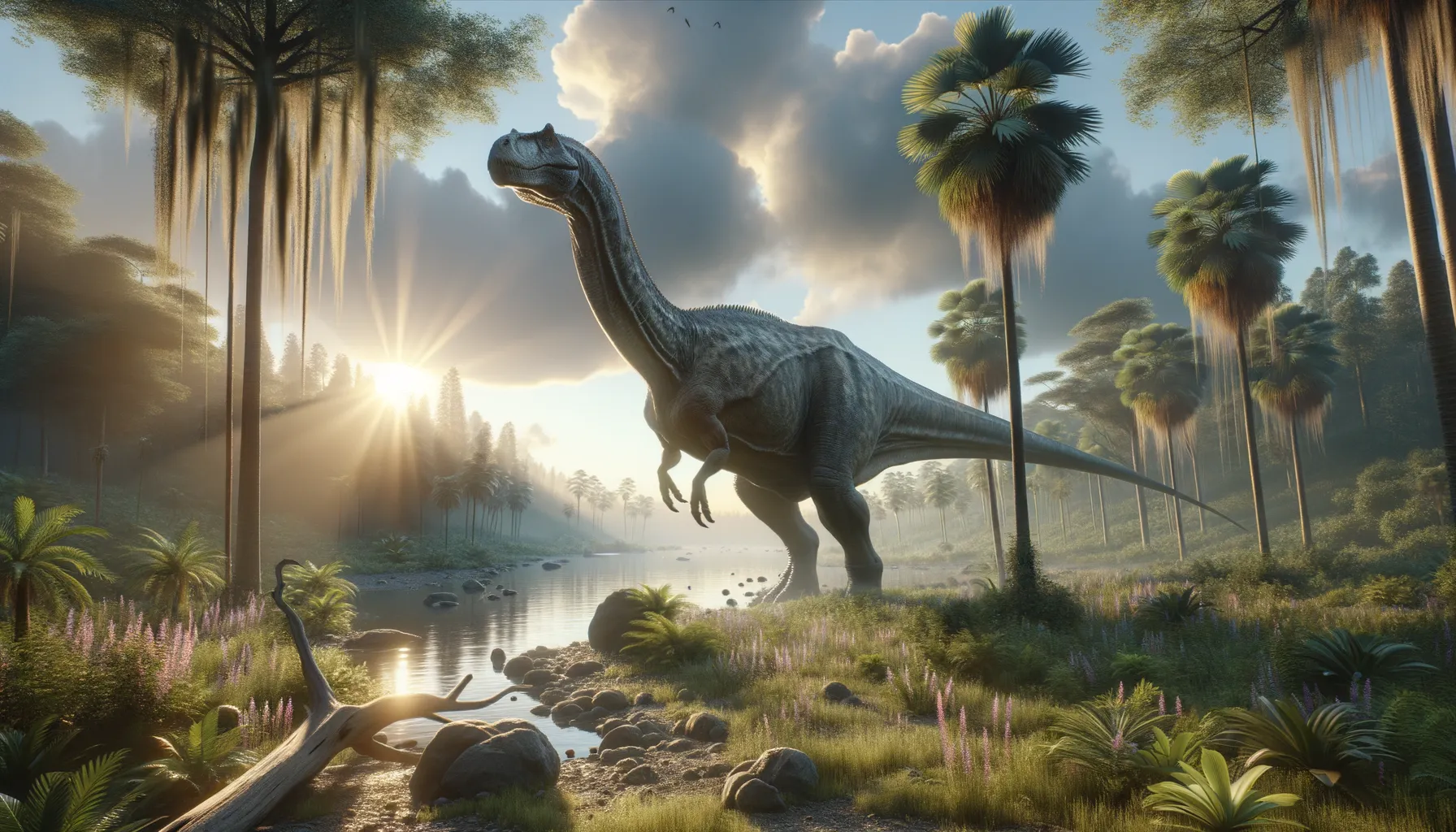
Chondrosteosaurus
Ancient giant of the Cretaceous world.
Period
Cretaceous
Length
Could reach up to 20 meters.
Height
Specific height is not well documented.
Weight
Estimated weight over 15 tons.
Chondrosteosaurus is a genus of herbivorous sauropod dinosaur. It lived during the Early Cretaceous period, notable for its massive size and long neck, similar to that of other sauropods. While not much fossil material has been found, it is believed to have roamed ancient landscapes, feeding on high vegetation. Its remains were discovered in England, contributing to the diverse paleontological findings of the area.
Diet
As a herbivore, Chondrosteosaurus fed primarily on plant material. Its long neck would have allowed it to reach high vegetation in trees. It likely consumed a large volume of plant matter daily to sustain its massive body.
Hunting
Chondrosteosaurus did not hunt as it was not a carnivore. Instead, it grazed in large herds. Their size and numbers would have provided some defense against predators.
Environmental challenges
Chondrosteosaurus faced environmental challenges such as changes in climate and vegetation. The ability to move across vast areas was important for finding sufficient food resources. Predation by large theropods might have been a threat, particularly to young or weak individuals. Evolutionary adaptations, like size, helped deter predators.
Speed
Likely slow due to heavy build.
Lifespan
Lifespan estimates are unknown.
First discovery
Described by Owen in 1876.
Fun Facts
- Chondrosteosaurus was a sauropod dinosaur, which means it belonged to the group of large, long-necked dinosaurs.
- This dinosaur lived during the Early Cretaceous period, roughly around 130 million years ago.
- Fossils of Chondrosteosaurus have been found in England, making it a native of the same land I grew up in.
- The name Chondrosteosaurus means 'cartilage and bone lizard', highlighting the unique structure of its vertebrae.
- Chondrosteosaurus, like other sauropods, was likely a herbivore, feeding on plants with its long neck for reaching tall trees.
- It is believed that Chondrosteosaurus could weigh as much as several elephants, though exact estimates are difficult due to fragmentary remains.
- Only a few bones have been found, so much about its appearance and lifestyle is still a mystery to scientists.
Growth and Development
Chondrosteosaurus likely exhibited rapid growth, similar to other sauropods. As they matured, their massive size provided protection. The development of long necks and tails was essential for accessing different food sources and balance. Juveniles might have relied on herd protection against predators.
Habitat
Chondrosteosaurus inhabited forested areas with abundant vegetation. These regions provided ample food and cover. Its habitat likely included river valleys which offered a steady water supply. The Cretaceous environment was rich in biodiversity, enabling diverse interactions.
Interaction with other species
Chondrosteosaurus might have shared its habitat with other herbivores, competing for resources. Its size could deter smaller predators but not large theropods. Coexisting with diverse species, it played an integral part in its ecosystem. Symbiotic relationships, like cleaning birds, might have occurred.
Natural lifespan
Natural lifespan specifics remain largely unknown.
Reproduction
Chondrosteosaurus probably laid eggs, similar to modern reptiles. Nesting sites might have been communal to protect offspring. Hatchlings were significantly smaller and more vulnerable. Parental care specifics remain unclear, but young likely stayed with herds.
Social behaviour
Chondrosteosaurus is thought to have been social, moving in herds. Herding behavior offered protection against predators. Social structures might have included juvenile nurseries. Vocalizations and physical gestures could have played a role in communication.
Fossil locations
Fossils have been found in the Isle of Wight, England. The remains consist primarily of vertebrae. These findings contribute to understanding the Early Cretaceous period. The region is known for a rich deposit of dinosaur fossils.
